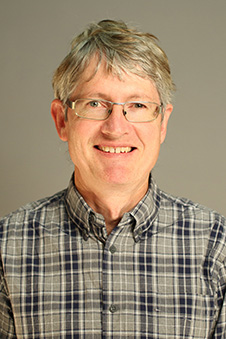If effective school zoning policies were widely applied, more adolescents would get valuable exercise walking or cycling to their nearest school, an Otago researcher says.

Associate Professor Michael Keall.
In a recently-published paper, Associate Professor Michael Keall from the University of Otago's Department of Public Health, Wellington led a team of international researchers to examine how school choice influences how adolescents travel to school.
They analysed data collected from 797 Dunedin adolescents with an average age of 15 years old, attending six public secondary schools without school zoning.
Previous analysis had shown that Dunedin adolescents who enrolled in the closest school had three times higher rates of walking as part of their journey to school, five times higher rates of only walking or cycling, and lower rates of reliance on motorised transport.
Their new results showed those living within walking distance of their school, less than 2.25km, accumulated an additional 11.5 daily minutes of physical activity, and those who lived within cycling distance, up to 4km away, accumulated 5.5 minutes of additional physical activity daily.
Associate Professor Keall says although those findings were specific to Dunedin, he expects the pattern could be extrapolated nationally as it is similar to other international studies.
Physical inactivity among adolescents is a common health issue worldwide, and rates of car-based transport to high schools in Dunedin have increased by about 10 per cent from 1989 to 2014.
Ministry of Health guidelines for adolescents call for an accumulation of at least one hour a day of moderate to vigorous physical activity.
“Parents need to consider their choice of school from the point of view of opportunities to use active travel to school, which has important benefits for health and wellbeing of the child both now and into the future, as this establishes habits and norms for adulthood.”
The lack of school zoning typically means a proportion of students have to travel further to school, and this journey is more likely to become motorised as the distance from home to their school increases, he says.
“This greater distance then deprives students of important opportunities for physical activity they would otherwise get from walking or cycling to school.
“Policy makers need to consider the public health considerations of this research when deciding on school zoning policies.”
According to the study, during the school commute times of 8am-9am and 3pm-4pm an estimated 11.5 per cent of Dunedin car trips were related to secondary school travel.
This data, combined with other results from the study, implied 12 per cent of emissions from light passenger vehicles in Dunedin was associated with secondary school travel.
With many children, adolescents and adults travelling as pedestrians or cyclists during school commute times, the study concluded it was likely motorised travel between home and school was associated with considerably more than 12 per cent of road traffic risk.
For the general public, if school zoning were widely applied, there would be a modest reduction in traffic congestion around school starting and finishing times, Associate Professor Keall says.
The study recognised the difficulties in replacing motorised travel with walking or cycling, especially in cities like Dunedin, where the terrain is hilly, the weather is often inclement and cycling infrastructure is poor.
An additional complication regarding encouraging adolescents to walk or cycle was that families often 'trip chained', or combined several trips into one, such as dropping children at schools before the parents continued on to work.
The BEATS Study was supported by the Health Research Council of New Zealand, National Heart Foundation of New Zealand and a Lottery Health Research Grant.
For more information, please contact:
Associate Professor Michael Keall
Department of Public Health
University of Otago, Wellington
Tel +64 4 918 6794
Email michael.keall@otago.ac.nz
Lydia Anderson
Communications Adviser
University of Otago
Tel +64 3 479 4728
Mob +64 21 279 9139
Email l.anderson@otago.ac.nz
Find an Otago Expert
Use our Media Expertise Database to find an Otago researcher for media comment.